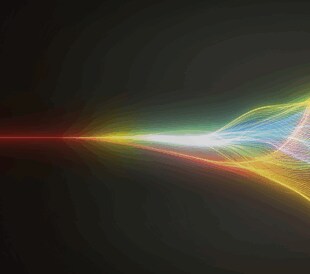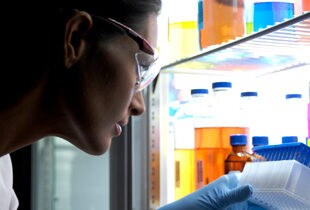Thresholds. Why do we spend so much time worrying about them? What are they, and how do I set them?
Thresholds allow you to assess data quality. For example, on an Applied Biosystems 3500 series capillary electrophoresis instrument, peaks heights correlate to signal intensity or relative fluorescent units (Or RFU’s). You can have confidence in peaks that reach or exceed your threshold.
There are two basic types of thresholds used in forensic DNA analysis; analytical and stochastic. An analytical threshold is the lowest RFU value at which DNA can be distinguished from noise. Signal above may be a DNA peak or an artifact; signal below is generally disregarded. To establish analytical thresholds, we measure the background noise of the chemistry and instrument. Historically, different analytical thresholds were set for each dye because the noise varied, especially when DNA was present. Nowadays, kits like the Applied Biosystems GlobalFiler™ amplification kit produce minimal noise, whether you are amplifying a negative control or a 1 ng DNA sample. Also, the GlobalFiler kit has very little dye-specific variation, so a single analytical threshold may be sufficient.
We’ve seen that the GlobalFiler kit on the 3500 instrument has a clean baseline; now let’s establish a reasonable analytical threshold. This requires an understanding of the 3500 series instruments. Because the 3500 scale is increased compared to the legacy instruments, noise-based analytical thresholds may complicate data analysis and interpretation. For example, samples with 500 pg or more of input DNA may generate pull-up peaks that exceed a low, noise-based analytical threshold. In complex mixtures, these pull-up peaks may be difficult to differentiate from minor component DNA peaks.
Can’t choose where to set the threshold?
Well, analytical thresholds should establish a balance between allele preservation and artifact editing, resulting in confident, accurate allele calls. Now let’s talk about stochastic thresholds. The stochastic threshold applies to low DNA input data where stochastic effects may be in play. You can reasonably assume that a peak above the stochastic threshold is not impacted by stochastic effects, therefore dropout of a sister allele is unlikely. Conversely, you may not have much confidence that a single peak below the stochastic threshold is a true homozygote. Examples of stochastic effects are allele drop-out, allele drop-in, sister allele imbalance, and elevated stutter. These effects occur more frequently in low-level DNA samples.
Set your stochastic threshold carefully! Thresholds set too low may lead to incorrect genotype calls due to stochastic effects, while thresholds set too high may lead to the loss of reliable information. The area between the analytical and stochastic thresholds is what we call “the gray zone”. DNA in the gray zone is in the stochastic region, therefore use caution when analyzing and interpreting Gray Zone data.
In discussing thresholds, we’ve been evaluating samples with complex mixtures and low-level DNA. But not all samples require such intense analysis. For example, reference samples from known individuals generally contain plenty of high-quality, single-source DNA. For these samples, database labs may use a direct amplification. To further streamline the direct workflow, database labs may choose to implement a single threshold for analysis.
Well, that about covers it for setting thresholds. If you have any questions or would like to see more such videos, click on the link below,
And don’t forget- when in doubt, you can always refer Back to Bases!



Leave a Reply